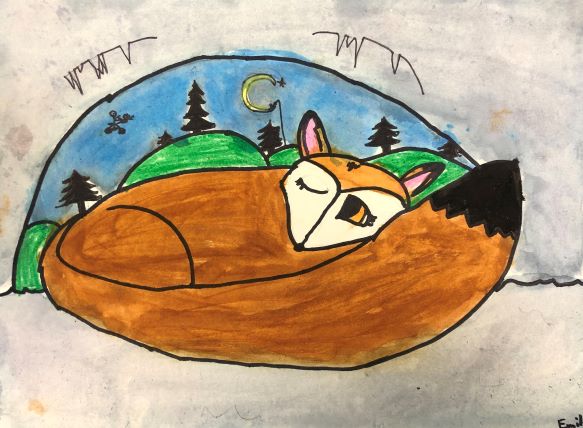
This Winter Fox is sly and cozy. Elementary students will study foreground, middle ground, background, and do a directed drawing with added personality. This project covers Common Core Standards for Science and Language Arts for grades 3-5 which can be found at the end of the lesson.
Grade Level
3rd, 4th, 5th, and 6th grade. This project was created by 5th grade students.
Objective for Winter Fox Art
Elementary students will study foreground, middle ground, background and do a directed drawing of a fox.
Time
2 – 30 min lessons
Materials
- Oil pastels – Pentel Arts Oil Pastels, 50 Color Set (PHN-50)
- Black Sharpie Marker – Sharpie Permanent Marker, Fine Point, Black, Pack of 5
- 9×12 Watercolor paper – Canson (100510941) XL Series Watercolor Pad, 9″ x 12″, Fold-Over Cover, 30 Sheets
- Brushes – Acrylic Paint Brush Set, 1 Packs / 10 pcs Nylon Hair Brushes for All Purpose Oil Watercolor Painting Artist Professional Kits
- Liquid Water Colors – Sargent Art 22-6010 10-Count 8-Ounce Watercolor Magic Set
- Or this mini version for homeschooling – Sargent Art 22-6210 10-Count 4-Ounce Watercolor Magic
- Kleenex for blotting paint
Inspiration/Artist
I made this project from this site Little Dog Art Blog: Click Here
Instruction with Questions
First
Read the book, “Pax,” by Sara Pennypacker.
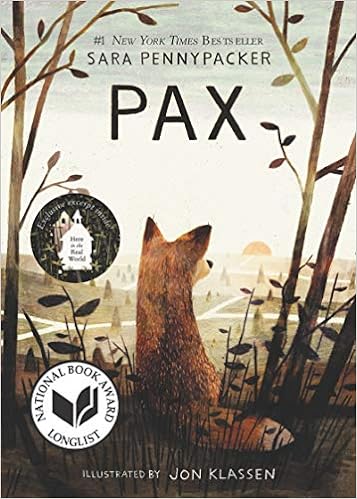
This book, named on Amazon’s book of the year is perfect for 8-12 year old students. My favorite thing is that along with a wonderful story and delightful illustrations, it also includes guided extension questions and activities at the end. What a wonderful language arts support!
Second
Discuss the element of art – Space. Many of these ingredients are used in this part project. Show them pictures of other student artwork.
- Note how the trees extend off the top of the page.
- See the base of the trees and notice where they land (the higher they are, the farther away they appear etc.) Their placement in relation to the horizon is key here.
- If your fox is in a cave, discuss items in the background.
- Explore if overlap is used when two foxes cuddle.
- Fill the whole page.
- Consider how large or small your images are.
Give them a handout of live and drawn fox images to use as a reference. discuss the shapes found in the face, body and tail.
Third
Students draw their tree and fox. Then they use black oil pastel on the trees either as a white birch or a solid black silhouette. I recommend that students use white oil pastel for the face, body and tail prior to outlining their fox. This will keep the white nice and pure. The fox is also outlined with black oil pastel or sharpie marker. The oil pastel does add a furry texture. The red fur can be done with a rusty color of brown oil pastel or a mix of watercolors. Finally, the sky is painted blue.
Check out these finished Winter Fox art pieces!
Common Core Standards for Winter Fox Art
Grade 3 – Science
Life Sciences
3. Adaptations in physical structure or behavior may improve an organism’s chance for survival.
a. Students know plants and animals have structures that serve different functions in growth, survival, and reproduction.
b. Students know examples of diverse life forms in different environments, such as
oceans, deserts, tundra, forests, grasslands, and wetlands.
c. Students know living things cause changes in the environment in which they live: some of these changes are detrimental to the organism or other organisms, and some are beneficial.
d. Students know when the environment changes, some plants and animals survive and reproduce; others die or move to new locations.
Grade 4 – Science
Life Sciences
3. Living organisms depend on one another and on their environment for survival.
a. Students know ecosystems can be characterized by their living and nonliving components.
b. Students know that in any particular environment, some kinds of plants and animals survive well, some survive less well, and some cannot survive at all.
c. Students know many plants depend on animals for pollination and seed dispersal, and animals depend on plants for food and shelter.
Grades 3-5 – Language Arts
Children’s adventure stories, folktales, legends, fables, fantasy, realistic fiction, and myth. Includes staged dialogue and brief familiar scenes. Also included are nursery rhymes and the sub-genres of the narrative poem, limerick, and free verse poem Includes biographies and autobiographies



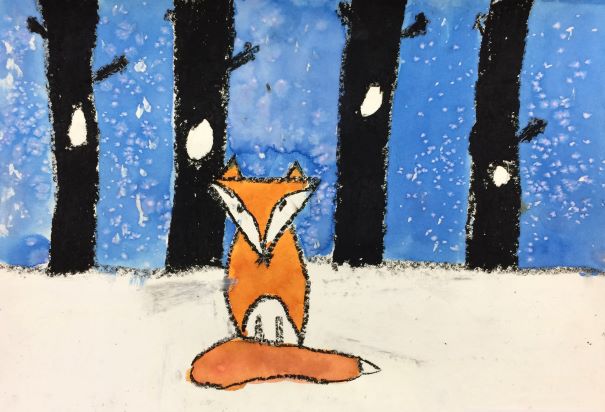
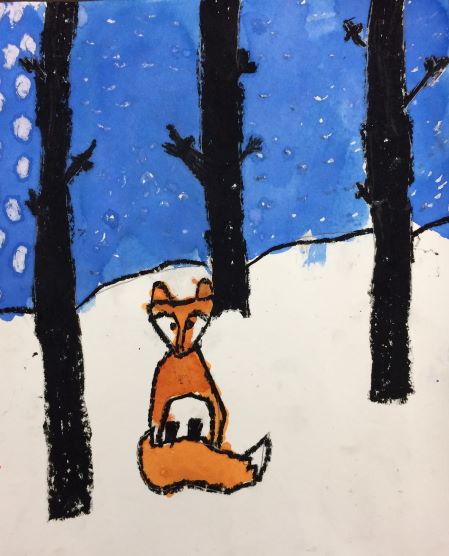


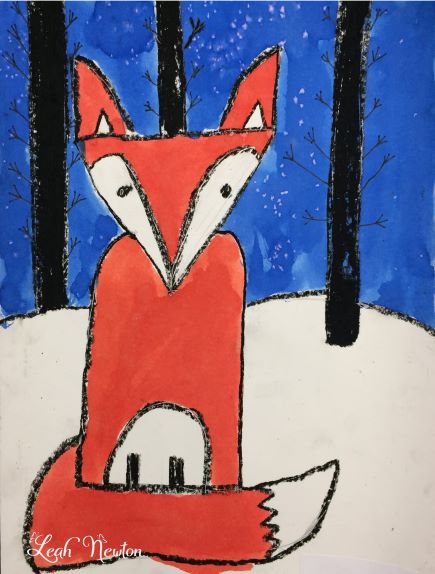

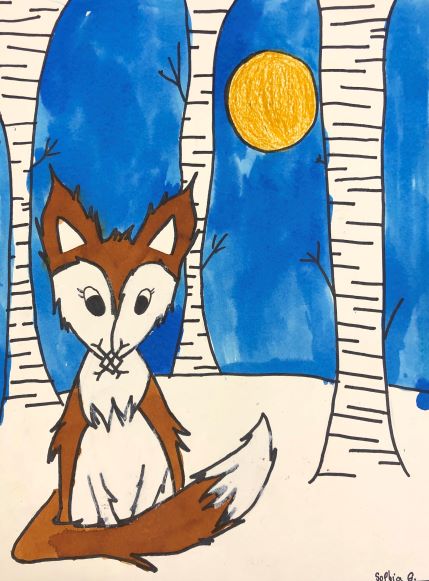






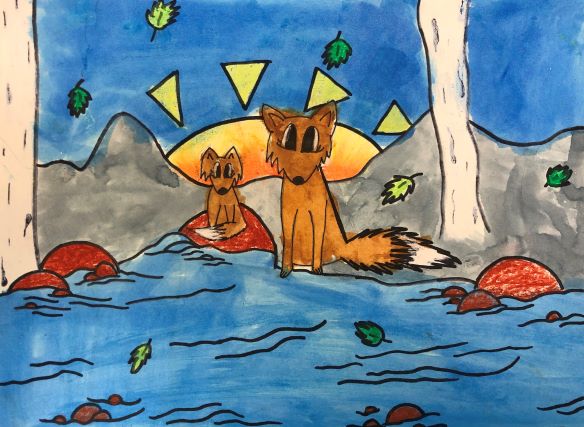










Leave a Reply